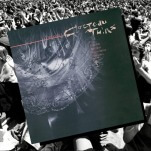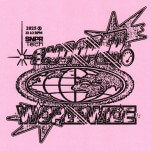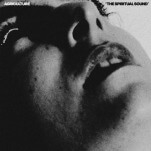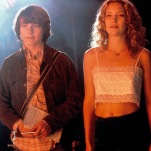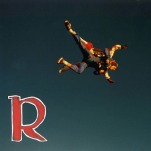10 Essential Slow-Burn Albums
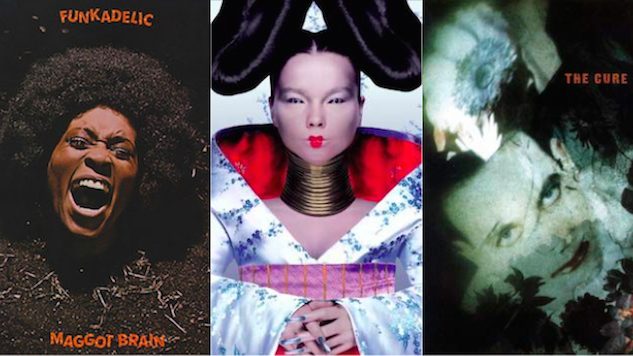
At first, some albums can seem like a pretentious mess with seemingly a million different ideas and sounds floating around at once. They might even still sound that way after many listens. But miraculously, there are albums that fully reveal themselves to listeners only after multiple listens. It’s a satisfying feeling when you not only grow to love a record, but feel like the hours you spent trying to tap into its magic and vision were worth it. Often, slow-burning records contain multiple layers of sound that require slow processing and analysis. They may seem inaccessible or be experimental in nature, necessitating previous exposure to lush, avant-garde or unique music in order to appreciate them for what they are. Other times, slow-burner albums aren’t necessarily experimental, but their melodies take more time to soak in than something more simple and instantaneous or their lyrics warrant close reading and interpretation. Here are 10 albums that were slow-burners for me. You may have loved some at first listen and given up on others immediately, but I’d recommend these for any vinyl collection or for fans of music that takes time to bloom into fruition.
1. Toy: Clear Shot
English five-piece Toy’s third studio album might have been more immediately gratifying for some people, but when I first heard it, I felt nothing. But I rarely give up on an album after just one listen, and I knew there was something really special about it that I just hadn’t tapped into yet. I was aware of Toy before, but I hadn’t heard either of their previous full-lengths prior to listening to Clear Shot, which is probably why it took me so long to get into it. I listened to the record’s 51 minutes of psych-pop, shoegaze and krautrock at least 10 times, and I still hadn’t successfully reached the promised land that I felt was ahead. After diving headfirst into the record several more times, what I discovered was something much greater than I had even envisioned. The stars aligned and suddenly, the delicate, hallucinatory beauty of “Another Dimension,” the climactic synth crescendo and the drum fills of “Dream Orchestrator” and the creepy cinematic quality that lurked beneath the surface of “Spirits Don’t Lie” all hit me within the same listening session—at least 15 spins into it. Luckily, this album paid dividends. It’s still one of my favorite albums to this day.
2. Wilco: Yankee Hotel Foxtrot
I avoided listening to Wilco for years, believing them to be over-hyped, run-of-the-mill alt-country. After so many people pointed me in the direction of their famous fourth studio album, Yankee Hotel Foxtrot, I decided to give them a chance. When I cynically turned on the album, my jaw practically hit the floor because of how it differed from my perception of Wilco. Because the album had so many odd psychedelic touches and it was often dense, it took some time for my soul to become intertwined with it. “I Am Trying to Break Your Heart” has strange swirling instrumentals with tons of bells and whistles that I won’t even begin trying to unpack here. Even the seemingly sparse “Radio Cure” has unorthodox production with a windy, circling sound in the background, which both seem out of place upon first listen, but after prolonged exposure, I couldn’t imagine the track any other way. Wilco’s Yankee Hotel Foxtrot wasn’t trying to be showy without substance—the album is literally overflowing with bewildering richness and frontman Jeff Tweedy’s mad, romantic inner-workings.
3. Funkadelic: Maggot Brain
Funkadelic’s Maggot Brain can be easily appreciated on first listen, but it doesn’t fully manifest until you’ve invested a significant amount of time and attention to its mind-blowing psychedelic funk. The record is arguably the best thing that Eddie Hazel has ever put out and his proficient guitar freakouts are difficult to dissect with an unfamiliar ear. It would also be unfair to write this off as a mere stoner record—but I’m sure this acid-drenched funk is a weed enthusiast’s paradise. There’s no doubt that Maggot Brain is hypnotic as hell, particularly the 10-minute title track and the album’s trippy, hippie spoken-word intro (“Mother earth is pregnant for the third time…I have tasted the maggots of the universe”) and the record unapologetically embodies the big and bold quality of the early ’70s. Songs like “Hit It and Quit It” and “Can You Get to That” are a bit easier to digest with their fun-loving choruses and gospel-style vocals, but their musical proficiency is just as evident.
4. Iceage: Plowing Into The Field of Love
Iceage fans are divided on which album to christen as the band’s finest work, but a case can certainly be made for their third album, Plowing Into The Field of Love. While their earlier releases are far more discordant and may appear less accessible to punk novices, they’re both easily devoured by seasoned punk listeners. Plowing Into The Field Of Love, on the other hand, initially sounds labored and superfluous, but it increasingly feels divine and defiant with each listen. One of the reasons I love Iceage is because of their seductive tension building and this record is the best example. Without necessarily giving in to animalistic emotions and in a way that doesn’t feel like you’re being conned out of a moment of satisfaction or relief, frontman Elias Bender Ronnenfelt sounds like he’s yearning with such romance or teeming with such rage that he might act on his feelings at any moment. “The Lord’s Favorite” is the band’s first venture into country-punk, but it’s arguably one of their best ever tracks, and “Glassy Eyed, Dormant and Veiled” displays their masterful tempo shifts and poetic lyrics in a harrowing tale about a drunk, abusive father.
5. John Coltrane: A Love Supreme
John Coltrane’s 1965 studio album, A Love Supreme is not only frequently cited as one of greatest jazz albums of all time, it’s also received the nod for one of the greatest albums of the 20th century. The evocative four-part suite is marked by Coltrane’s tenor saxophone, echoing cymbals and free-flowing disregard for tempo and traditional chord changes. On top of all that, there’s also stumbling piano playing that sounds aimless and clumsy on first listen, but later sounds like every note was strategically placed for maximal spiritual and improvisational effect. Though it’s characterized by modal, avant-garde and free jazz, the album arguably transcends jazz with its experimental spirit that deconstructs every instrument and puts it back together with such a wild energy and raw emotional sentiment. Along with Miles Davis’ Kind of Blue, it’s a jazz album that can get fans of all genres to appreciate its artistry.
6. Bjork: Homogenic
Bjork’s third studio album, Homogenic is part tribute to her native Iceland and part left-field pop epic. As the title suggests, Homogenic marked a departure from her genre-dodging previous record Post, but its experimental, electronic soundscapes and her unconventional, instantly recognizable vocals are equally transfixing. It may sound jarring when diving in for the first time, but if you spend enough time to process her rich artistry and expansive vision, you’ll be able to fully shield yourself from the noise of the world for 45 minutes. The sinister-yet-heavenly strings of “The Hunter,” the discordant percussion and disorienting synths on “Pluto” and her elusive vocal performance on “Joga” all capture an idiosyncratic sound that makes her nearly peerless. The steep, regal art-pop highs of Homogenic are thrilling and peculiar as each listen reveals another luxuriant melody, instrumental brushstroke or meticulous sonic texture.
7. My Bloody Valentine: Loveless
It’s difficult to think of a more transportive record than My Bloody Valentine’s Loveless. If you’ve never heard anything like it before, you might think it sounds like a drug-induced experiment where the producer fell asleep on the mixing board, accidentally creating the foggiest, noisiest, most distorted record possible. Though it definitely does bring the noise, I assure you it’s no accident—guitar wizard Kevin Shields knew exactly how to get thick, washed-out, guitar feedback and he’d find any guitar pedal necessary to get the desired sound out of his head and on record. Bilinda Butcher’s haunting vocals bleed into the lush guitar wall of sound with such finesse. Though you’ll come for the whooshing bluster of guitars, you’ll stay for her siren-like, Cocteau Twins-esque murmur. I’m not sure of many other alternative or shoegaze bands as harsh or ear-splitting as My Bloody Valentine, but if you stick around, there’s plenty of twinkling moments of melodic beauty (“Only Shallow,” “When You Sleep,” “To Here Knows When”) to cut through the onslaught of profuse distortion.
8. The Cure: Disintegration
For many fans of The Cure, Disintegration is the essential Cure album. Frontman Robert Smith is bursting at the seams with gloomy emotion as slow, melodic guitars and atmospheric keyboards culminate in goth rock’s most celebrated work. While “Pictures of You” and “Lovesong” are the most accessible and best-known tracks here, the rest of the record signifies their departure from pop—a cannonball into the moody and tantalizing abyss of darkness and introspection. The record’s eerie, string-like keyboards and intricate, sometimes droning production are hard to fully grasp in one sitting, but even with your first listen, it’s hard not to recognize the magic they capture with pumping post-punk basslines, Smith’s longing vocals and swirling, transcendent guitars. “Fascination Street” is true to its title as spacey guitar grooves circle around Smith’s funereal voice for sparkly goth-rock alchemy. This is one of those records where it’s easy to fully comprehend its classic status after the first listen, but you won’t be able to unravel each guitar lick, drum groove or Smith’s full-fledged misery until you’ve completely marinated in its vast glory and surrendered to its doom and gloom.
9. Grouper: Grid of Points
The layered, opening vocals of Grouper’s Grid of Points are like a hallucinatory church hymn. When Liz Harris, the mastermind behind Grouper’s delicate, ambient minimalism, tears into the piano-based “Parking Lot,” there’s nothing but purity, wonder and devastating sadness. If you need a mental cleanse where few instrumental elements surround hazy sorrow and saintly, gorgeous vocals, Grouper will perfectly fill that void. This is an album to unwind after a tough week that necessitates the complete flushing out of all the positive and negative emotions that have occupied the heart and mind. The lyrics on Grid of Points might not always be decipherable, but that’s not why you listen to Grouper. Sure, there’s beautiful poetry to be discovered in these songs, but first and foremost, Grid of Points is for the lost souls who need to be returned to their faithful, earnest owners. You may need several spins of this brief LP to fully trek through the pain, but Grid of Points is as rejuvenating as it is glum.
10. Car Seat Headrest: Twin Fantasy
Car Seat Headrest’s 2018 reworking of his 2011 Bandcamp album, Twin Fantasy is an exuberant record and an ode to the anxieties, confusion and heartache of young adulthood. Will Toledo’s latest LP has a few seven- or eight-minute monsters and even two songs that comfortably clear the 10-minute mark, which is partially why this record requires a good soak before contemplating its merits. The 13-minute “Beach Life-In-Death” has so many infectious melodies, but its unusual song structure didn’t connect with me until I heard it at least five times. Songs like “Cute Thing” and “Nervous Young Inhumans” are immediately catchy, but tracks like “Famous Prophets (Stars)” and “Twin Fantasy (Those Boys)” just take time to parse through Toledo’s witty musings and his disregard for typical pop/rock song structures. You get out what you put into this 70-plus-minutes album and those who persevere will be rewarded with his humorous self-put-downs and razor-sharp observations of the social and romantic intricacies of youth as well as tales of almost inevitable self-medicating and other coping mechanisms necessary to exist in a post-modern world.
